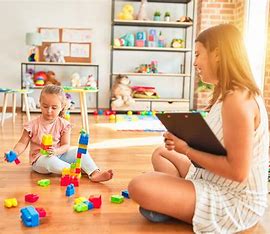
5.Problem Solving With Your Clever Brain
🧠 Anxiety Hates Uncertainty Sometimes, a child’s anxiety comes from not knowing what to do in a tricky situation. Problem-solving gives them back a sense of control. 🔄 The “Four I’s” Tool: 1. **Identify** the problem. 2. **Investigate** what type of problem it is. 3. Think of **Ideas** that could help. 4. **Invite Help** from a trusted adult. 🧘♀️ Key Tip: Turn it into a visual game or worksheet—use colours, stickers, or drawing. Empower your child to *solve*, not spiral.

2.What Happens in the Body When We’re Anxious
🔍 Spotting the Signs When anxiety strikes, children may not say “I feel anxious.” Instead, they might say: - “My tummy hurts.” - “I feel funny.” - “I don’t want to go.” This is because anxiety doesn’t just live in the brain—it shows up in the body too. 🧬 The Science (Simplified) When a child’s brain detects “danger,” it releases adrenaline. That’s a hormone that makes the heart beat faster, the tummy twist, and the muscles tense—getting the body ready to act. 🧘♂️ Key Tip: Help children spot early signs of anxiety in their body. Awareness leads to earlier, easier calming.

6.I Am a Confident Lion – Using Visualisation
🦁 Your Inner Lion Is Always With You Visualisation is powerful. It helps children tap into bravery they already have—even when anxiety tries to tell them otherwise. 🧠 Try This Guided Imagery: “Close your eyes. Picture yourself as a proud lion standing tall in a sunlit field. You feel calm, grounded, strong. The wind is gentle. The ground is solid. You are safe and steady.” Let them stay in this space for 1-2 minutes, then return slowly. 🧘♂️ Key Tip: Practise this when they’re calm—then call on their ‘lion’ in anxious moments.

2: Masking, Meltdowns, and Shutdowns – What Anxiety ReallyLooks Like
😶 Anxiety Isn’t Always Out Loud For many neurodivergent adults, anxiety doesn’t look like panic—it looks like: - Appearing calm while internally screaming (masking) - Total emotional overwhelm (meltdown) - Going completely blank or non-verbal (shutdown) 🌀 The Pressure to “Keep It Together” Many of us have spent years learning to mask. But just because you’re functioning on the outside doesn’t mean you’re okay. Masking is exhausting. It’s also one of the biggest contributors to chronic anxiety and burnout. 🔥 Meltdown & Shutdown Aren’t Behavioural Issues They’re survival responses. When you reach cognitive overload, your body and brain shut down as protection. 🧘♀️ Key Support Strategy Learn your early warning signs. Build in recovery time. And create environments where you don’t have to perform all the time.

1: Anxiety in the Neurodivergent(ND) Brain – It’s Not JustWorry
🔍 Let’s Start With This: You’re Not “Overreacting” If you’re neurodivergent (ADHD, autistic, or otherwise), you’ve likely heard it all before: - “You’re too sensitive.” - “You’re always overthinking.” - “Just calm down.” But here’s the truth: you’re not broken. You’re processing differently. Anxiety in neurodivergent adults doesn’t always follow the same path as in neurotypical ones. It’s not “just worry” or “irrational thoughts”—it’s often sensory overload, task overwhelm, social exhaustion, or executive dysfunction disguised as panic. 🧠 Neurodivergent Brains, Different Wiring When we talk about anxiety in ND adults, we’re often talking about: - Overwhelm from environments that weren’t built with us in mind - Burnout from years of masking or pushing through - Rejection sensitivity that makes every interaction feel like a risk - A nervous system that never quite switches off This is not anxiety in isolation—it’s anxiety as a result of constantly navigating a world that expects you to

9: Predictability and Routine – The Secret to a Calmer Brain
🧭 Why Routine Helps When the world feels unpredictable, anxiety rises. Routine acts like a soft blanket—it provides structure, safety, and fewer surprises for the brain to worry about. 🧩 What Predictability Looks Like: A clear morning or bedtime routine Visual schedules or checklists Transition cues (like a song or countdown) 🕒 Try This: Create a simple visual timetable together with your child. Use drawings or stickers. Let them help decide the order—it gives them ownership and reduces stress. 💬 Key Message: Routine isn’t boring—it’s calming. Predictability helps quiet the “what if” thoughts before they spiral.